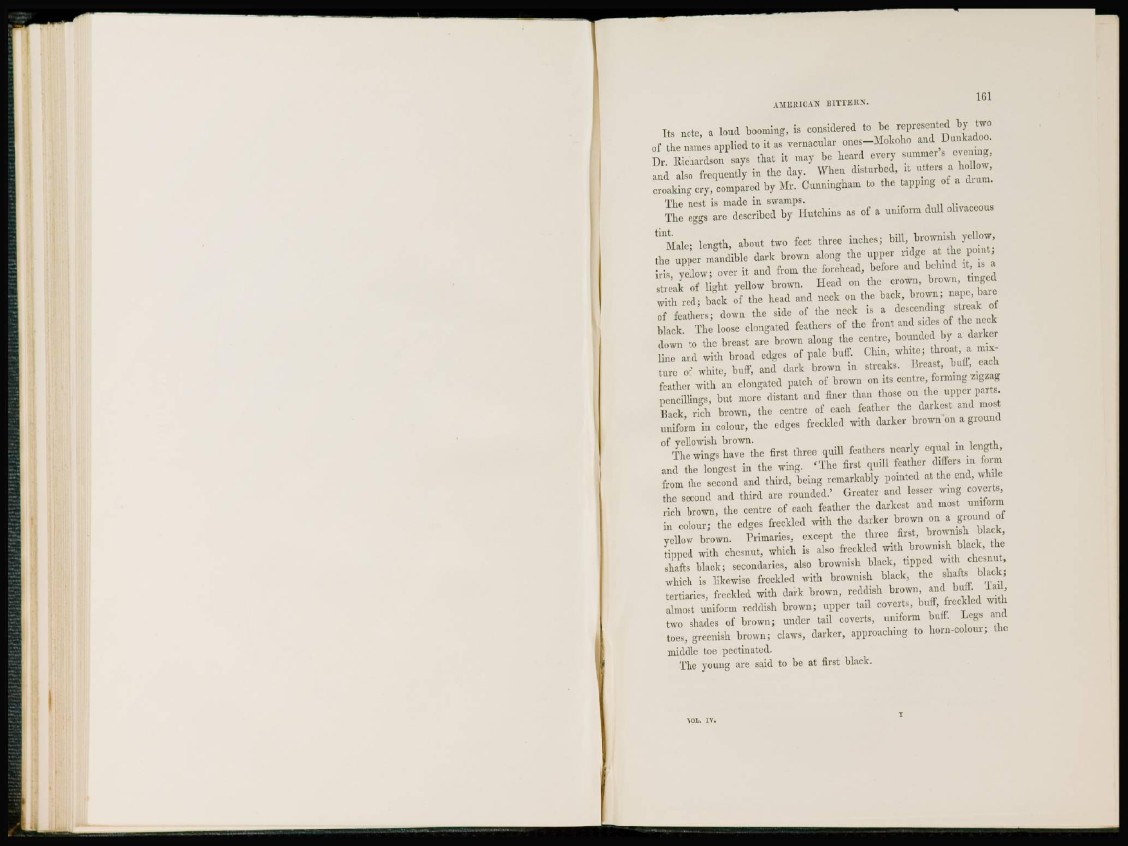
AM Eli I CAN BITTERN.
Its note, a loud booming, is considered to be represented by two
of the names applied to it as vernacular ones—Mokoho and Dunkadoo.
Dr. Itichardson says that it may be heard every summer's evening,
and also frequently in the day. AVhen disturbed, it utters a hollow,
croaking cry, compared by Mr. Cunningham to the tapping of a drum.
The nest is made in swamps.
The eggs arc described by Hutchins as of a uniform dull olivaceous
tint.
Male; length, about two feet three inches; bill, brownish yellow,
the upper mandible dark brown along the upper ridge at the point;
iris, yellow; over it and from the forehead, before and behind it, is a
streak of light yellow brown. Head on the crown, brown, tinged
with r e d ; back of the head and neck on the back, brown; nape, bare
of feathers; down the side of the neck is a descending streak of
black. The loose elongated feathers of the front and sides of the neck
down to the breast arc brown along the centre, hounded by a darker
line and with broad edges of pale buff. Chin, white; throat, a mixt
u r e of white, buff, and dark brown in streaks. Breast, buff, each
feather with an elongated patch of brown on its centre, forming zigzag
pcncillings, but more distant and finer than those on the upper parts.
Back, rich brown, the centre of each feather the darkest and most
uniform in colour, the edges freckled with darker brown on a ground
of yellowish brown.
The wings have the first three quill feathers nearly equal in length,
and the longest in the wing. 'The first quill feather differs in form
from the second and third, being remarkably pointed at the end, while
the second and third are rounded.' Greater and lesser wing coverts,
rich brown, the centre of each feather the darkest and most uniform
in colour; the edges freckled with the darker brown on a ground of
yellow brown. Primaries, except the three first, brownish black,
tipped with chesnut, which is also freckled with brownish black, the
shafts black; secondaries, also brownish black, tipped with chesnut,
which is likewise freckled with brownish black, the shai'ts black;
tertiaries, freckled with dark brown, reddish brown, and buff. Tail,
almost uniform reddish brown; upper tail coverts, huff, freckled with
two shades of brown; under tail coverts, uniform buff. Legs and
toes, greenish brown; claws, darker, approaching to horn-colour; the
middle toe pectinated.
The young are said to be at first black.
T